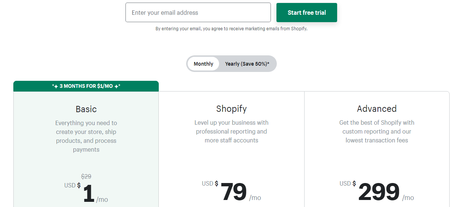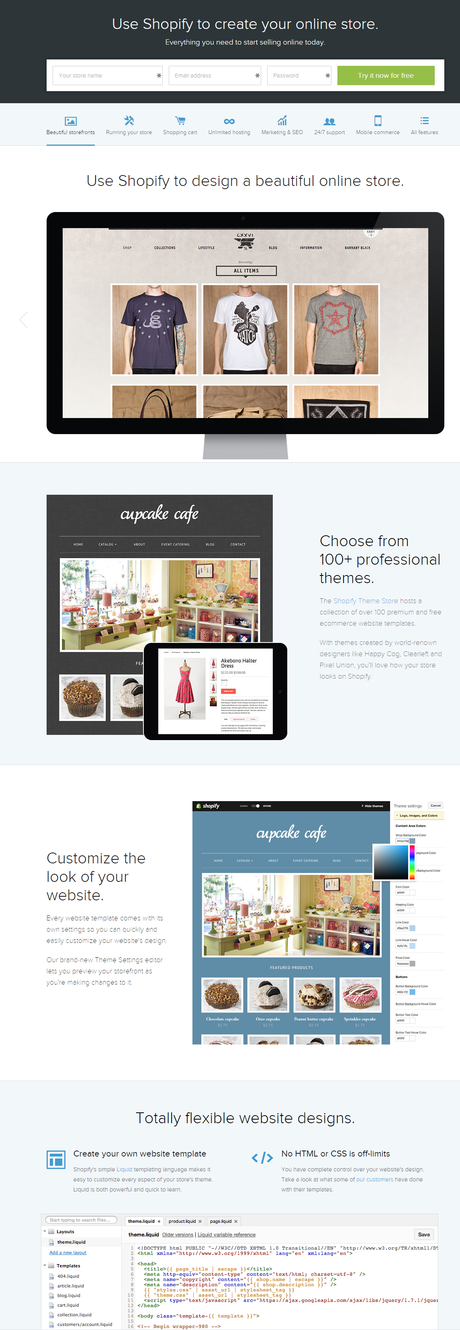Selling art online is a great way for artists to gain exposure and make money from their work. With the right tools, setting up a successful online shop is easier than ever.
In this article, we’ll discuss why using Shopify is an ideal platform for selling art and provide a step-by-step guide on how to get started.
Selling Art Online Using Shopify 2022: Overview
Why Use Shopify?

Shopify is an ecommerce platform that allows you to create your own online store.
It’s user friendly and easy to navigate, making it the perfect place to set up shop if you’re just getting started with selling your artwork online.
Here are some key benefits of using Shopify for selling art:
A Wide Array of Features

Shopify has a wide array of features that make it an attractive choice for businesses.
It offers easy setup and customization options with no coding required, as well as built-in SEO capabilities, mobile optimization, and support for multiple languages.
It also has integrated payment solutions to help you quickly set up an online store without having to worry about setting up third-party payment gateways or merchant accounts.
Plus, Shopify provides its own analytics so you can easily track your store’s performance in real time.
Easy to Use Platform
Shopify is designed with user-friendliness in mind so that even those who are new to setting up an online store can do so quickly and easily.
With drag and drop website building tools, it takes minimal effort to build a professional-looking website that can be customized with the company logo, colors and more.
In addition, there is no coding involved which makes the process even easier and faster.
Secure Payment Options

Security is one of the most important aspects when it comes to setting up an ecommerce store, as customers need to trust that their data will remain safe when they shop on your website.
With Shopify, transactions are securely encrypted using SSL (Secure Socket Layer) technology which ensures that customer data remains protected from cybercriminals.
Additionally, customers can rest assured knowing that their payment information is handled through PayPal or Stripe which are both trusted payment gateways.
Analytics & Tracking Tools
As a business owner, having access to detailed analytics and tracking tools is invaluable in understanding how consumers interact with your website and what kind of tactics work best for marketing purposes.
With Shopify’s built-in analytics tools, users can track sales performance over time as well as where customers are coming from geographically so they can tailor their marketing strategies accordingly.
Additionally, users have access to Google Analytics integration so they can monitor traffic sources such as organic searches or paid campaigns with ease.
Reliable Customer Support
Shopify also has a team of dedicated customer support representatives who are available 24/7 to help you with any issues you may have with your store or website.
They are knowledgeable about all aspects of running an online store and can provide quick and reliable solutions.
Additionally, if you need more advanced technical support or custom development work done on your site, they offer expert services from certified developers who can help take your store to the next level.
Affordable Pricing Options

Finally, Shopify offers affordable pricing plans that make it accessible to businesses of all sizes.
They offer both monthly subscription plans as well as discounted annual plans that can save you money over time.
Additionally, they have a variety of add-on services available such as domain name registration and SSL certificates that can help make your site even more secure and reliable.
Guide to Selling Art Online Using Shopify

Creating Your Store
Now that we know why Shopify is great for selling art online, let’s jump into how to create your store! Follow these steps below to get started:
- Sign Up: Go to shopify.com and click “Sign Up” in the top right corner of the page. From there, enter all the necessary information such as name and billing address into the form provided. You will also be asked for payment information but don’t worry—you won’t be charged until after the free 14-day trial period ends!
- Choose a Theme: After signing up comes designing your store! Choose one of the many Shopify Themes available on website or customize one yourself using HTML/CSS coding knowledge (if you have it). Once you’re done designing your store front end (i.e., homepage), move onto step 3!
- Add Products: Upload images of artwork along with descriptions and prices in order for customers to purchase them from your store. Also include any additional information that might be helpful such as size measurements or care instructions if applicable.
- Set Up Payment Options & Shipping Rates: Make sure that all payment options are set up correctly (e.g., PayPal). Also add in different shipping rates depending on location; this way customers don’t have too high of a fee if they happen to live further away from where you ship from!
- Launch Your Store: Once everything is set up properly, click “Launch My Store” at the bottom left corner of the page and voila—you just launched an online shop! Now all that’s left is sharing it with others through social media platforms or by word-of-mouth so people know about it

Marketing Your Store

Once you have created your store, it’s time to start marketing it to potential customers. One great way to do this is by utilizing social media platforms such as Instagram, Twitter, and Facebook.
You can use these platforms to post updates about new products or sales in order to reach more people and generate more interest in your store.
Additionally, don’t forget about email marketing—you can send newsletters with product updates or special offers that will help keep customers engaged with your brand.
Managing Your Store

Finally, managing your store is key when it comes to selling art online.
Make sure you stay organized by keeping track of inventory levels, customer orders, shipping times, returns/exchanges policies—the list goes on!
While this may seem daunting at first, there are plenty of tools built into Shopify that make managing a store much easier than before.
Plus, if you ever run into any issues or need help with anything related to running a shop on Shopify, their customer support team is always available for assistance!
Quick Links:
- Which is better: Shopify or Wix?
- How to Find Winning Shopify Products Easily
- Jungle Scout vs ASINspector
- How to Get Started With Dropshipping
- Maximizing Your Advertising Potential with Craigslist
- List of Best Facebook Ads Spy Tools
- Divi vs Wix
- Beaver Builder WooCommerce Integration
- Jungle Scout Review
- Email Marketing Ideas For Your Campaigns
- GoDaddy SSL Review
Conclusion: Selling Art Online Using Shopify 2022
Selling art online doesn’t have to be complicated! With Shopify’s user-friendly system combined with its plethora of features like customizable themes and automated emails.
It’s never been easier for artists to start building their own businesses without having any prior experience in ecommerce platforms whatsoever!
We hope this step-by-step guide was helpful in getting you started on establishing yourself as an artist entrepreneur.. Good luck!

